Craig grew up in Hinckley, Leicestershire and was educated at the University of Leicester, gaining a degree in Psychology and Computer Science. He was initiated into Freemasonry in 2003, and became master of his lodge in 2014. Outside of his interests in Freemasonry, Craig is a lecturer in Computer Games Design and Computer Science at a college in Warwickshire. He also develops websites for businesses. He lives with his family in Coventry.
ED: Firstly, what inspired or motivated you to write A Journey in Stone? Perhaps you could tell us a bit about your own experience of Freemasonry. When did you join and how has it helped you to ‘smooth the ashlar’?
CW: When I joined Freemasonry in 2003, I was very eager to find out what it was all about.
I wanted to know how it developed and where it came from. I would read as many books and articles that I could get my hands on.
Eventually, I came to the conclusion that Freemasonry had a deep heritage going back into antiquity.
This heritage was a tradition that focused on looking within to find life’s deepest secrets and developing the self.
This is how I have looked at Freemasonry throughout my membership; as a way of looking at the world through symbolic language, and to delve into the deeper aspects of existence.
The metaphor of working stone is a perfect fit; crafting the self to find the form that is waiting within, finding one’s true self.
Combined with a wish to express my findings, I pursued my goal of wanting to write a book.
ED: You gained a degree in Psychology and Computer Sciences at Leicester University in 1998 and now work as a lecturer in Computer Games Programming at Staffordshire University. How has your training influenced your Freemasonry? And conversely, how has Freemasonry influenced your work?
CW: I have always looked on the symbolism of Freemasonry as language of Psychology.
It is a way of understanding the human condition, and to delve into the mysterious sub-conscious; to learn more about yourself.
Therefore, the psychological aspects of my training have heavily influenced how I read and understand Freemasonry.
The craft is all about development, and so is teaching and lecturing.
I have a deep passion for developing individuals so that they can live the most fulfilling life they can.
As a way of expressing this, I am currently developing a training system that is based on the ideas symbolised in Freemasonry.
In this system, I focus on helping an individual to discover their essential talents and passions, then to learn how they can express these in their life and business, for maximal gain.
On top of this, and in addition, I am very keen to demonstrate the parallels in computer games technology and developmental aspects of the Craft.
Games can be a modern candidate based training platform that can help the participant find out more about themselves.
ED: A Journey in Stone looks at the ancient symbols and philosophies of Freemasonry and how they were designed to help a person transform their lives. Do you think the relevance of these symbols and philosophies are still appreciated in modern Freemasonry?
CW: In a nutshell, no. I think that much of the meaning of Freemasonry is glossed over.
In many lodges, it is all about the ritual, and that is all.
Obviously, performing the ritual correctly and with meaning is highly important.
However, I am convinced that many Masons today have a very limited appreciation of the deeper meaning of the Craft.
I think that this is because many Masons have no idea where or how to look deeper into the subject.
There is very little emphasis on Freemasonry as an active interest.
I fear that, for many, it has just become something that one does once a month in a lodge room, followed by a meal.
This is why lodge mentors should be those who have a deeper understanding themselves; who can help members along their own paths.
ED: How would you encourage younger men to become involved in Freemasonry – you have a very fresh and dynamic approach to mentoring; what do you believe is the way forward in recruiting the new generations?
CW: Frankly, the younger generation is lost.
They live in a world of selfies, new gadgets, rampant consumerism, echo chambers and a cult of celebrity.
They search for answers, and none of these things provide satisfactory ones.
I am convinced that this inner yearning for meaning that is capitalised on by the modern world to create profit is something that can be provided for by Freemasonry.
In summary, Freemasonry should advertise itself as a method of looking within to find answers; a psychological journey to understand one’s place in the world.
Care would have to be taken to make this message as secular as possible, with emphasis on the fact that Freemasonry is not a religion, but a science of understanding the self.
ED: English Freemasonry has just celebrated its Tercentenary– how do you feel the organisation could change and adapt to our rapidly evolving culture? Will it still be around in another 300 years?
CW: When I first joined Freemasonry one thing that stood out to me was the deep concern by the older members that the Craft would have to modernise for younger men, or die out.
These older members misunderstand newer generations.
In fact, younger generations crave the rich heritage and deep meaning to be found in the Craft as it already exists.
All that needs to happen is for this deeper understanding to be widened throughout the Masonic community, so it can be more easily communicated.
It would be a mistake to change the Craft, or water it down.
Indeed, the moment this starts to happen is the beginning of the end.
Freemasonry isn’t just a club that does charitable works; it is a philosophical system of development, and the world needs to know this.
Preservation, deeper understanding, and wider communication are all key to the next 300 years and beyond.

EXTRACT FROM A Journey in Stone:
When Michelangelo began working on his statue of David it is said that he spent a lot of time just sitting there, looking at the huge block of marble. One day his commissioners spotted him apparently idling, and went up to him to ask him why he didn’t seem to be doing any work.
Michelangelo replied that he was working. He was imagining the form of the statue within the marble block so that he knew which parts he needed to chip away.
This story tells us something about the symbolism of the rough ashlar, namely that it represents the Masonic Candidate before he goes through the first stage of his initiation, and that he is like a stone taken fresh from the quarry within which there is an ideal form waiting to be revealed.
Freemasonry, then, is the work that is done on the rough ashlar to bring out the new form.
The new form within represents the individual’s potential to be something more than what he is. Society relies on its individual members, and the more each person can do to benefit that society, the more that society will benefit as a whole.
However, this hidden potential is buried away, deep inside. It is hidden even from the individuals themselves.
Generally speaking, human beings grow up with the idea that they must get a job in order to earn money, in order to have a decent life.
The better educated a person is, the better job they can have. Whilst this is true, perhaps the focus of the individual needs to shift.
Instead of learning things that will aid the pursuit of money, perhaps a better way of looking at everything is for a person to look within and understand what talents they have.
Then the focus would be to develop these inner talents in order to see how they can be directed to serve society in the best way possible.
No one gives us an instruction booklet when we enter this world, and we are all finding our way in the dark, taking our cues of how to live life from those around us.
The thing is, those people around us are doing exactly the same thing that we are.
The rough ashlar represents the person who has lived life so far in this normal way, and has perhaps given very little thought as to the potential that really lies inside.
Finding talents that lie within and developing them is a far better way of leading a more fulfilling life.
All work that is performed from this point of view becomes an extension of the person. Rather than being viewed as ‘work’, the person finds that they are doing what they love to do.
This feeling of doing what they love allows the person to be happy in their jobs. A person utilising the talents they know they have makes every job full of purpose.
Freemasonry can take the raw material in a person and, as the meaning of the symbolism in Freemasonry begins to do its work, the person can slowly uncover who they really are and what they are capable of doing.
Furthermore, as we have seen, many cultures throughout the ages have believed that there is something deeper to reality than can be uncovered and understood at the personal level.
This deeper essence answers the question ‘why is it that there is something rather than nothing?’
Being a part of the material universe, it makes sense that a human being also shares this essence as the ground of their being.
A human being also has the capacity to be conscious and self-aware.
This puts us into a unique position to detect this essence. Detecting this essence, though, requires effort and industry.
It requires us to be able to dig down into ourselves and chip away until the inner reality is revealed. After concerted effort, the Freemason may come to an understanding of where this essence lies within themselves.
You can read more about Craig’s work at https://meridianxp.com/
Article by: Philippa Lee. Editor

Philippa Lee (writes as Philippa Faulks) is the author of eight books, an editor and researcher.
Philippa was initiated into the Honourable Fraternity of Ancient Freemasons (HFAF) in 2014.
Her specialism is ancient Egypt, Freemasonry, comparative religions and social history. She has several books in progress on the subject of ancient and modern Egypt. Selection of Books Online at Amazon
 A Journey in Stone – Extracts of Wisdom p.10 More extracts of wisdom from Craig Weightman's book 'A Journey in Stone' – in this final part in the serialisation, we discover the Transformative Symbolism of the Royal Arch – and the end of the journey. |
 A Journey in Stone – Extracts of Wisdom p.9 More extracts of wisdom from Craig Weightman's book 'A Journey in Stone' – this month, we explore the 'Illusion of the Self and the Truth of Interdependency' |
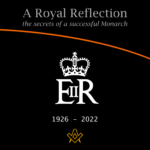 A Royal Reflection – the secrets of a successful Monarch On the death of Her Majesty Queen Elizabeth II, Craig Weightman, in a fitting tribute to an exemplar, recently departed, reflects on how the late Monarch's life demonstrated how we should all live every moment, as we serve others. A poignant reflection on a life that was resplendent in virtue, to the benefit of all, which is what Freemasonry attempts to teach us. |
 A Journey in Stone – Extracts of Wisdom p.8 More extracts of wisdom from Craig Weightman's book 'A Journey in Stone' – this month, we explore |
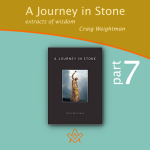 A Journey in Stone – Extracts of Wisdom p.7 More extracts of wisdom from Craig Weightman's book 'A Journey in Stone' – this month, we explore |
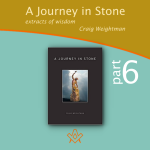 A Journey in Stone – Extracts of Wisdom p.6 More extracts of wisdom from Craig Weightman's book 'A Journey in Stone' – this month, we explore the Working Tools of the Third Degree. |
 A Journey in Stone – Extracts of Wisdom p.5 More extracts of wisdom from Craig Weightman's book 'A Journey in Stone' – this month, we explore the Working Tools of the Second Degree. |
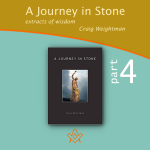 A Journey in Stone – Extracts of Wisdom p.4 The Working Tools of the First Degree – the twenty-four-inch gauge. This book collates masonic author and psychologist, Craig Weightman's collective wisdom and philosophy, taking you on a fascinating 'journey in stone'. |
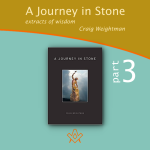 A Journey in Stone – Extracts of Wisdom p.3 This book collates masonic author and psychologist, Craig Weightman's collective wisdom and philosophy, taking you on a fascinating 'journey in stone'. |
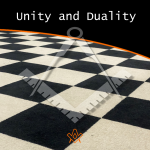 Craig continues his previous exploration into the 'hero's journey' through life's travails; this month we discover how within the stormy sea of battling opinion and confusion, there is an island called Freemasonry. |
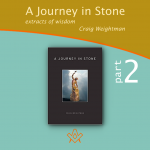 A Journey in Stone – Extracts of Wisdom p.2 This book collates masonic author and psychologist, Craig Weightman's collective wisdom and philosophy, taking you on a fascinating 'journey in stone'. |
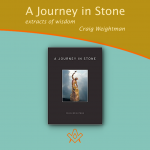 A Journey in Stone – Extracts of Wisdom p.1 For those who have enjoyed Craig Weightman's thought-provoking and inspiring monthly features, this book collates his collective wisdom and philosophy, taking you on a fascinating 'journey in stone'. |
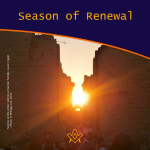 This spectacle takes place at the same time every year. Literally, the sun 'dies' for three days, then is reborn on the Christmas morning. |
 Coming to Terms with the Great War Within Ourselves Discover your 'shadow' - the black-and-white path to self-awareness - "A man who is possessed by his shadow is always standing in his own light and falling into his own traps...living below his own level." - Carl Jung |
 The Masonic Art of Being a Gentleman What defines the masonic art of being a gentleman; a chivalrous, courteous, or honourable man? |
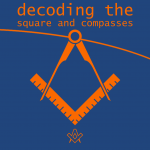 Decoding the Square and Compasses The square and compasses is the most famous symbol with which Freemasonry is identified. However, this is not just a logo that helps the organisation to stand out from the rest. |
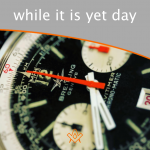 Each moment is a gift that you can make the most of. We can all do more; many of us do not live our lives to the full. |
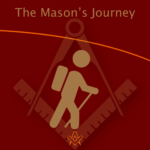 The hero’s journey can also be seen in the Masonic system; a candidate first considers embarking on the Masonic journey but wonders whether it is really for him |
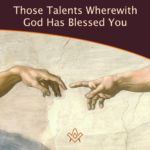 Those Talents Wherewith God Has Blessed You Incorporated in the charge to the initiate, has a lasting impression of what Freemasonry is all about. |
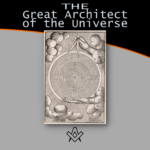 The Great Architect of the Universe When a candidate for 'Regular' Freemasonry is interviewed, prior to being admitted, he is always asked if he believes in a Supreme Being. |
Recent Articles: in meet the author series
 Meet The Author - Albert Mackey As a contributor to the literature and science of Freemasonry, Doctor Mackey's labours have been more extensive than those of any other in America or in Europe. |
 Philippa Lee talks Masonry and metaphysics with Ben Zion, the author of two must-have books on esoteric Freemasonry. |
 Meet The Author - Robert Freke Gould A brief look at his life, Gould was a soldier, barrister and prominent Freemason and Masonic historian. He was also one of the founders of Quatuor Coronati Lodge in 1886 |
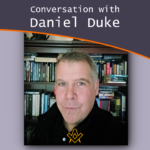 In Conversation with…Daniel Duke Author Daniel Duke talks to Philippa Lee about his new book 'Secret History of the Wild, Wild West' the third in a series on Outlaws, secret societies and hidden treasure. Dan is the great-great grandson of the infamous Jesse James, and the definitive authority on the subject. |
 Mike's Masonic Walks and Talks Mike Neville offers walks and talks primarily around London, based on his vast knowledge of the area and his specialist subjects, which cover all aspects of Masonic history, and some unique insight into the more shady side of 'Crime and the Craft'. |
 Darren Lorente-Bull is the author of 'The Other Brotherhood: When Freemasonry Crossed the English Channel' and five other books. Here he talks to Philippa Lee about his beliefs, his Freemasonry, and books. |
 Meet The Author - Angel Millar This month I am delighted to interview Angel Millar – author of five books on Freemasonry, esotericism, and world spiritual and initiatory traditions. |
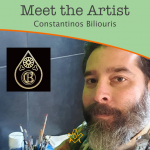 Constantinos Biliouris is a Greek Artist and brother from the Grand Lodge of Greece who creates a range of hand painted masonic aprons. |
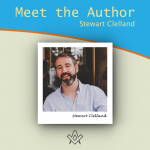 This month Editor Philippa Lee meets Stewart Clelland the author / translator of The Green Book of The Élus Coëns |
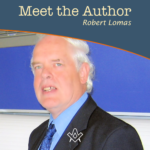 Editor Philippa Lee interviews well-known Masonic author Dr Robert Lomas |
 This month we feature ten of our recommended Masonic authors ranging from the early 1900s to the modern day, and we offer our 'Square choice' of their books. |
 We talk with ‘Brother Hogarth’ who is currently writing a series of articles featuring the Masonic art of William Hogarth. |
 If you would like your work to be featured in The Square, please take a look at our submissions guidelines and send any ideas or contributions to the Editor for our consideration. |
 A slight deviation from our usual 'Meet the Author' theme but equally as interesting, we have a 'Portrait of an Artist' - Travis Simpkins - the man capturing the likeness of Freemasons worldwide! |
 This month we Meet the Author: historian and biographer Kevin Shillington. |
 This month in 'Meet the Author' we look at the life and work of Carl H. Claudy, a prolific Masonic author who believed that Masonic education is the foundation for the Fraternity. |
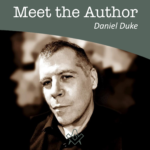 Daniel Duke, the great-great grandson of Jesse James, grew up surrounded by stories of lost outlaw treasures. |
 Stephen Dafoe - numerous books on the Knights Templar, and Morgan: The Scandal That Shook Freemasonry. |
 Paul Sparks – author of A Guide for the Masonic Treasurer |
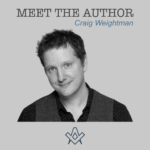 Craig Weightman – author of A Journey in Stone |
masonic knowledge
to be a better citizen of the world
share the square with two brothers

click image to open email app on mobile device










